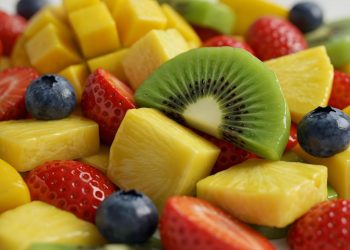High A1C can feel daunting, but understanding what you put on your plate is crucial for managing it. Your A1C levels reflect your average blood sugar over the past two to three months, and keeping them in check can transform your health. You want to live your life fully, not just survive it. So let’s dig into the ten foods you should steer clear of to lower your A1C and reclaim your well-being.
Contents
Why A1C Matters
A1C is more than just a number. It’s a reflection of how your body handles glucose—essentially, how well your insulin does its job. High A1C levels can lead to serious complications such as heart disease, nerve damage, and kidney issues. Knowing which foods to avoid empowers you to take control of your health.
Foods to Avoid for High A1C
1. Sugary Beverages
Sweet drinks are often the worst offenders. Sodas, sweetened teas, and energy drinks can spike your blood sugar levels faster than you can say “diabetes.” Just one can of soda can contain up to 40 grams of sugar. That’s your entire daily allowance in one gulp!
- Alternatives: Opt for water, herbal teas, or sparkling water with a splash of lemon.
2. White Bread and Pastries
Refined carbohydrates are notorious for causing blood sugar spikes. White bread, pastries, and many commercial baked goods are stripped of fiber, making them a poor choice for anyone looking to lower their A1C.
- Alternatives: Choose whole grain options or sprouted bread for more nutrients and fiber.
3. Full-Fat Dairy
While dairy can be part of a balanced diet, full-fat versions can be high in saturated fats, leading to insulin resistance. Milkshakes and high-fat cheeses may taste great, but they don’t do your A1C any favors.
- Alternatives: Switch to low-fat or plant-based dairy options.
4. Fried Foods
Fried foods are loaded with unhealthy fats that can wreak havoc on your blood sugar levels. French fries, fried chicken, and doughnuts are not just high in calories; they can also increase your risk of insulin resistance.
- Alternatives: Opt for baked or air-fried options to enjoy your favorites without the guilt.
5. White Rice
White rice has a high glycemic index, meaning it can cause a rapid spike in blood sugar. Just a cup can send your A1C numbers soaring.
- Alternatives: Try brown rice, quinoa, or cauliflower rice for a nutrient-rich swap.
6. Processed Snacks
Chips, pretzels, and other processed snacks often contain hidden sugars and unhealthy fats. It’s easy to munch mindlessly, but those calories add up and can raise your A1C.
- Alternatives: Snack on nuts, seeds, or air-popped popcorn for a healthier crunch.
7. Candy and Sweets
Sugar-laden candies and treats can be your worst nightmare when it comes to blood sugar management. A single candy bar can contain more sugar than you should consume in a day!
- Alternatives: Satisfy your sweet tooth with fruit or a small piece of dark chocolate.
8. High-Sugar Breakfast Cereals
Many breakfast cereals are marketed as “healthy” but can be loaded with sugar. Some contain more sugar than dessert!
- Alternatives: Look for whole-grain oats or unsweetened cereals to start your day right.
9. Fruit Juice
Even though fruit juice comes from fruit, it often lacks the fiber that helps stabilize blood sugar levels. A glass can contain the sugar equivalent of several whole fruits.
- Alternatives: Eat whole fruits instead to benefit from the fiber and nutrients.
10. High-Sodium Processed Foods
Processed foods can sneak in high levels of sodium, which can contribute to hypertension and other health issues. Canned soups, frozen meals, and deli meats often fall into this category.
- Alternatives: Cook fresh meals at home and use herbs and spices for flavoring.
The Importance of Balanced Nutrition
Eating right is about balance. While it’s essential to avoid high A1C foods, you also want to fill your plate with nutritious options. Incorporate whole grains, lean proteins, healthy fats, and plenty of vegetables.
Tips for a Healthier Diet
- Plan Meals: Take time to plan your meals for the week. This helps you avoid impulse eating.
- Read Labels: Get into the habit of reading food labels. Look for hidden sugars and unhealthy fats.
- Stay Hydrated: Drink plenty of water. Sometimes thirst masquerades as hunger.
- Portion Control: Pay attention to portion sizes to manage your intake.
Seeking Support
If you’re feeling overwhelmed, don’t hesitate to reach out to healthcare professionals. Dietitians can provide personalized meal plans tailored to your needs, making it easier to navigate your dietary choices.
Resources to Help You
Bottom Line
Managing high A1C levels isn’t just about avoiding certain foods; it’s about embracing a healthier lifestyle. By eliminating these ten foods, you’re taking a bold step toward transforming your health.
You have the power to make choices that will benefit your body and your future. So take charge, stay informed, and remember: the journey to lower A1C levels is not a sprint; it’s a marathon.
Embrace the change, and know that every small decision adds up. Your body will thank you for it!
FAQ
What is a healthy A1C level?
A healthy A1C level is generally below 5.7%. Levels between 5.7% and 6.4% indicate prediabetes, while 6.5% or higher suggests diabetes.
Can I reverse high A1C levels?
Yes, with dietary changes, exercise, and lifestyle adjustments, many people can lower their A1C levels and improve their overall health.
How long does it take to see changes in A1C?
It typically takes about 2-3 months of consistent lifestyle changes to see a noticeable impact on your A1C levels.
Take the first step today toward a healthier you!
Get Your FREE Natural Health Guide!
Subscribe now and receive our exclusive ebook packed with natural health tips, practical wellness advice, and easy lifestyle changes — delivered straight to your inbox.














